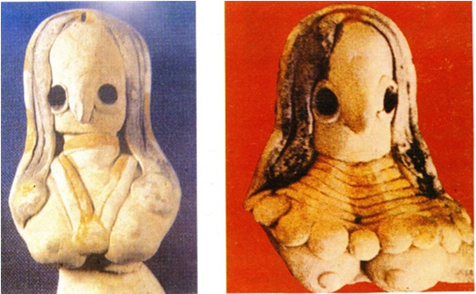Folk tales depicts the earliest tradition and culture of the people. Folk literature comprising stories ballads, songs, proverbs and riddles is essentially an oral tradition. Folk tales of different regions in the world represent a way of thoughts, ideas, traditions, manners and customs and even the incidence of wit...
The art of tradition of pata paintings developed near temples. This tradition of folk paintings on cloth is largely known as pat, patt, pata, and phad paintings. Pata paintings have religious themes and thus illustrate unity in diversity in India. This establishes the fact that in spite of regional...
Mrugendra Vinod Introduction VEDiC literature is basically oral and hence called Śruti. It was committed to writing to facilitate learning in historical period. Vedic literature is made up of śākhās. Śākhās have Saṁhitā, Brāhmaṇa and Āraṇyaka as names of books. These śākhās have been compiled by the vedācāryas in...
Vasant Shinde IT Is a well-known fact that the Haṛappan civilization that flourished in major part of the north-west Indian subcontinent between 2600 BCE to 1900 BCE (Shinde 2016) laid the foundation of modern India. Most of the Indian traditions and basic knowledge system were introduced in the Indian...
Shashi Tiwari Abstract The Vedas suggest that the Vedic people were acquainted with the seven rivers and especially with the mighty river Sarasvatī. Vedic mantras present an extraordinary picture of culture, religion, philosophy, economics, polity, ritualistic practices and scientific knowledge of the Vedic people. The description of the mighty...
Meenakshi Dubey-Pathak PrEsENT-DAy use of rock art sites for ceremonies by local traditional populations has become very rare. We have been fortunate to learn about such ongoing practices in the Pachmaṛhī and other areas in central India. Pachmaṛhī is a small town of 15,000 inhabitants, 211 km south of...
The interpretation of human cultural past with the aid of folklore and traditions is an important aspect in understanding the various facets of intangible heritage. The folklore and traditions are transmitted from generation to generation and preserved in loosely held rituals and cultural traits, some of which survive even...
B.B. Lal Way back in the third millennium BCE, there were four major civilizations on the Afro-Asian continents: the Egyptian civilization on the banks of the Nile, the Mesopotamian civilization in the Euphrates Valley, the Chinese civilization on the Yellow River and the Indian civilization on the Indus, running...
Introduction ARChAEOLOGiCAL records in India and Pakistan before and after 1947 reveal that in addition to many sites distributed along the main course and the tributaries of Indus and Sarasvatī rivers, there were many sites in Gujarat, Baluchistan hills and along Makran coast. Geographical extent of the Indus civilization...
Perspectives of Cognitive Development and Perception of Reality of Our Stone Age Ancestors -Giriraj Kumar Abstract: Rock art is a form of folklore expressed on the bare surface of rocks mostly by our Stone Age ancestors. It is an important source for understanding the cognitive, intellectual and cultural development...






